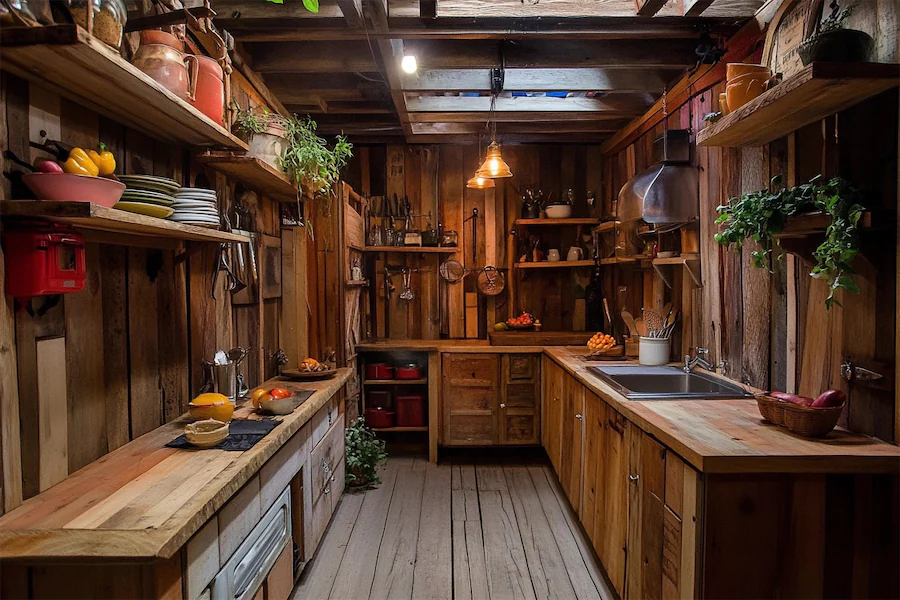A hidden kitchen, also known as an invisible or concealed kitchen, integrates seamlessly into living spaces by disguising traditional kitchen elements. This design approach is ideal for open-plan layouts and smaller homes, offering a sleek, uncluttered aesthetic.
Key Features of Hidden Kitchens
- Concealed Appliances: Integrate appliances behind cabinetry that matches the surrounding decor, creating a uniform look. For example, refrigerators and dishwashers can be hidden behind panel doors that blend with the cabinetry.
- Retractable or Sliding Doors: Install doors that can close off kitchen areas when not in use, effectively hiding countertops, sinks, and cooking spaces. This allows the kitchen to disappear, enhancing the room’s overall aesthetic.
- Minimalist Design: Employ handleless cabinets, slab doors, and neutral color palettes to reduce visual clutter and help the kitchen blend into the living area. This minimalist approach contributes to a cohesive and streamlined appearance.
Design Considerations for Hidden Kitchens
- Functional Layout: Ensure the kitchen remains practical by carefully planning the placement of appliances and workspaces, even when concealed. The design should maintain efficiency and accessibility.
- Quality Materials: Use durable materials that can withstand the demands of a kitchen while maintaining the desired aesthetic. High-quality finishes ensure longevity and a polished look.
- Lighting: Incorporate adequate lighting solutions that are both functional and discreet, complementing the hidden nature of the kitchen. Consider under-cabinet lighting or recessed fixtures to maintain a clean appearance.
Benefits of Hidden Kitchens
- Space Optimization: Ideal for small apartments or open-plan homes, hidden kitchens maximize space by allowing areas to serve multiple functions without the visual presence of a kitchen.
- Aesthetic Appeal: Provides a clean and uncluttered look, enhancing the overall design of the living space and allowing for a cohesive interior style.
- Flexibility: Allows homeowners to transform their space according to their needs, easily concealing the kitchen during entertaining or when it’s not in use.
Conclusion
Hidden kitchens offer a modern solution for integrating culinary spaces into living areas without compromising on functionality or style. By focusing on seamless design elements and thoughtful planning, homeowners can create versatile environments that adapt to their lifestyle needs.
